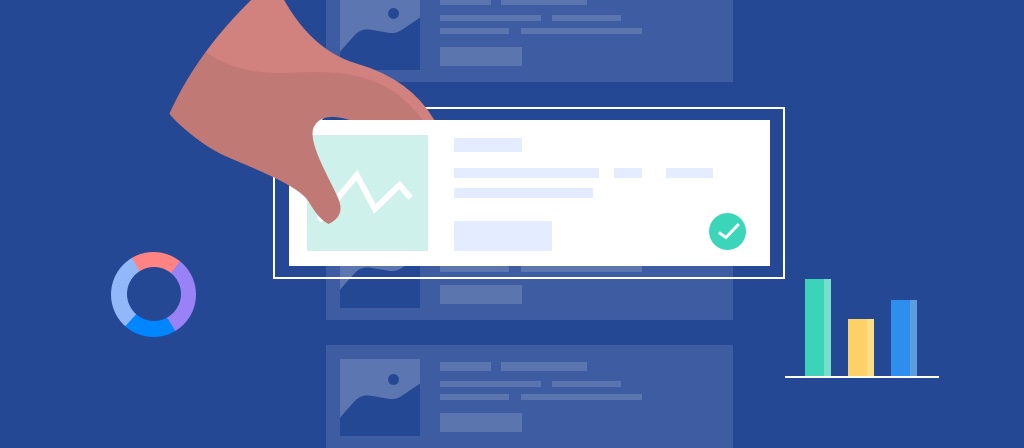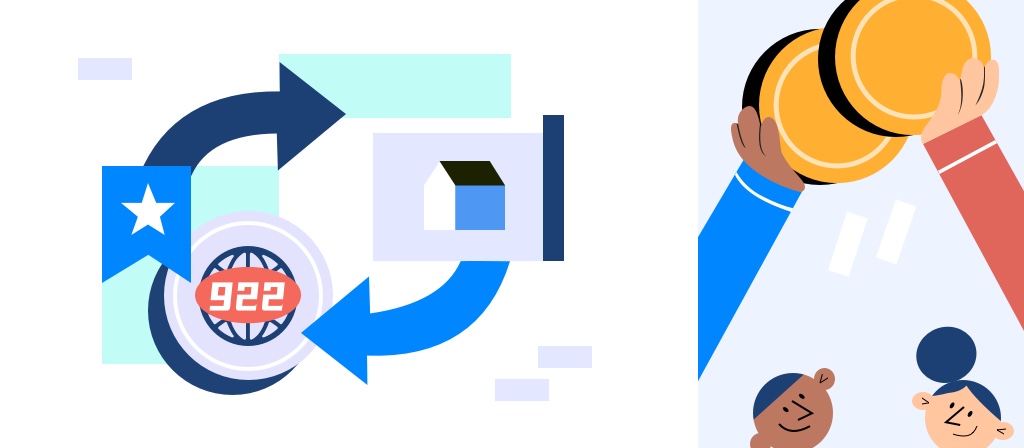
In today’s e-commerce competition, Amazon, as the world’s largest one-stop shopping platform, provides rich product information and price changes. However, merchants, consumers, market analysts, etc. all need to track Amazon’s product prices in order to conduct market competition analysis, price optimization, and promotion strategy adjustments.
In this case, using price scraping tools and proxy services to monitor Amazon prices has become an important means. In particular, residential proxies have become the preferred solution for many price scraping tasks due to their concealment and efficiency.
What is an Amazon price scraper?
Amazon price scrapers are software or systems used to automatically collect Amazon product price data. These tools are able to regularly grab product price information and organize it into a format that can be analyzed. With these tools, merchants and consumers can monitor price fluctuations of different products, evaluate market trends, and even set price alerts to ensure that purchases are made or pricing is adjusted when the price is right.
These tools usually crawl data in two ways: web scraping and API calls. Web scraping simulates users visiting Amazon pages and extracts price data, while APIs allow product information to be obtained directly from Amazon’s database.
Why crawl Amazon prices?
Market research: By crawling Amazon’s price data, merchants and enterprises can analyze market dynamics, identify competitors’ pricing strategies, and understand consumers’ purchasing preferences.
Pricing strategy optimization: By tracking price changes, merchants can adjust their pricing strategies based on real-time price information to ensure that they remain competitive in the market.
Price monitoring and arbitrage: Consumers and merchants can seize opportunities for price fluctuations and conduct cross-platform arbitrage, especially when there are cross-regional price differences for certain products.
Product promotion and promotion: By analyzing the patterns of price changes, merchants can predict the best time for promotional activities and optimize advertising and discount strategies.
Web crawling Amazon prices: best methods
Web crawling
Web crawling is a technology that uses automated scripts to obtain web page source code and extract price information. This method does not require access to the API and is more flexible. However, it should be noted that Amazon uses anti-crawler technology to prevent frequent crawling.
API crawling
If you are an Amazon certified developer, you can obtain real-time data on products through the API provided by Amazon. The advantage of this method is that you can directly obtain Amazon’s price information and avoid the complexity of web page parsing.
Regular crawling and real-time monitoring
The crawling tool can be set to run regularly, crawl data regularly, or implement real-time monitoring to track price changes at any time. When the price reaches a certain threshold, the system can automatically send a reminder to facilitate users to make purchasing decisions.
Data cleaning and analysis
The raw data captured needs to be cleaned (deduplication, standardization) and sorted before it can be effectively analyzed and meaningful insights can be obtained.
Why do you need residential proxy server?

When crawling Amazon prices, it is especially important to use a proxy server. The proxy server acts as an intermediary between the user and the target website. It can hide the real IP and change the source of the request to avoid being blocked. Specifically, residential proxies provide the following advantages:
Avoid IP blocking: Frequent requests from the same IP will trigger Amazon’s anti-crawler mechanism, resulting in IP being blocked. Residential proxies use real user IP addresses to simulate normal browsing behavior and reduce the risk of being blocked.
Improve the stealth of crawling: Unlike data center proxies, residential proxies are more like ordinary users and can avoid detection by most anti-crawler systems to ensure that crawling tasks proceed smoothly.
Bypassing geographic restrictions: Amazon prices are often affected by different regions. By using residential proxies in different countries, you can access price information in specific regions and get more accurate market data.
Stability and reliability: Residential proxies are generally more stable than data center proxies and are suitable for applications that require long-term, large-scale crawling tasks.
How to choose the right proxy server?
When choosing a proxy server, you need to consider the following factors:
Proxy type: Choose residential proxies instead of data center proxies, because residential proxies can provide higher anonymity and stability, especially for tasks that require long crawling.
IP pool size: Choose a proxy service provider with a large IP pool. Having more IP resources means that the frequency of IP rotation can be reduced, avoiding the risk of being blocked.
Geographic distribution: Choose a proxy service that provides IPs from all over the world to ensure that you can access price information in different regions.
Anonymity and speed: The anonymity of the proxy determines whether you can avoid being detected by Amazon, and the speed of the proxy determines the crawling efficiency. Choose a proxy service provider that provides high anonymity and stable high-speed connection.
Price and stability: Choose a proxy service provider that is reasonably priced and can provide continuous high-quality services to avoid service interruptions during crawling.

How to configure a proxy server and Amazon price tracker?
To configure a proxy server and price scraper, you can follow these steps:
Choose a proxy provider: First, choose a proxy service provider that supports residential proxies, provides large-scale IP pools, and automatic IP rotation.
Set proxy configuration: Enter the proxy’s IP, port, and authentication information (such as username, password) into the price scraper.
Adjust scraping frequency: Set the scraping interval to avoid frequent requests that trigger Amazon’s response and lead to IP blocking.
Set proxy pool rotation: Set the proxy pool rotation strategy according to demand. You can choose to change IPs regularly or manually select a specific IP pool based on the scale of the scraping task.
Monitoring and debugging: After the scraper is configured, monitor the scraping task to ensure that the proxy is working properly. If you find that the IP is blocked or the request fails, you can adjust the configuration immediately.
Practical application of proxy servers and Amazon price trackers
Price change analysis: Merchants or consumers can identify the pattern of price fluctuations by scraping price history data to provide a basis for pricing and purchasing decisions.
Competitor analysis: By crawling the prices of competitors’ products, merchants can adjust their pricing strategies to ensure that they are in a favorable position in the competition.
Automated price alerts: Set price alerts. When the price of a product reaches the set threshold, the reminder is automatically triggered to help users seize the best purchase opportunity.
Cross-platform arbitrage: There may be differences in product prices in different regions or on different platforms. Using proxies can help crawl price data in multiple regions and conduct cross-platform arbitrage.
Why choose 922proxy’s residential proxy service to track Amazon prices?
As a leading proxy service provider, 922proxy can provide efficient and stable solutions for Amazon price tracking:
Extensive IP pool: 922proxy has residential IPs in multiple countries and regions, which can bypass Amazon’s geographical restrictions and provide support for crawling tasks worldwide.
Powerful IP rotation function: 922proxy’s IP pool rotates regularly to ensure the continuity of crawling tasks and avoid bans caused by too many requests for the same IP.
High anonymity and security: 922proxy’s residential proxy hides the user’s real IP, avoids detection by Amazon, and provides encrypted connections to protect user data security.
Excellent customer support: 922proxy provides 24/7 customer support to ensure that users can solve any problems encountered during the crawling process in a timely manner.

Conclusion
By using residential proxies, combined with powerful Amazon price crawling tools, merchants and consumers can obtain accurate price data and optimize their pricing strategies or purchasing decisions. Choosing the right proxy service (such as 922proxy) can ensure the smooth progress of crawling tasks, avoid IP bans, bypass geographical restrictions, and improve the efficiency of data crawling. Whether you want to conduct market research, competitor analysis, or cross-platform arbitrage, residential proxies are an indispensable tool for you.
FAQ
Q1: Why choose residential proxies instead of data center proxies?
Residential proxies are more like ordinary users, can avoid Amazon’s anti-crawler system, and are more suitable for long-term and high-frequency crawling tasks.
Q2: Will Amazon ban proxy IPs?
Yes, Amazon may block IPs with frequent requests, but the risk of blocking can be reduced by using residential proxies and reasonable crawling strategies.
Q3: How to set the crawling frequency of the price tracking tool?
You can set a reasonable crawling interval based on the stability of the proxy and the needs of the crawling task to avoid too frequent requests.
Q4: How does 922proxy’s residential proxy ensure stability?
922proxy provides a global pool of high-quality residential IPs, supports IP rotation and high anonymity, and ensures stable and continuous operation of crawling tasks.



